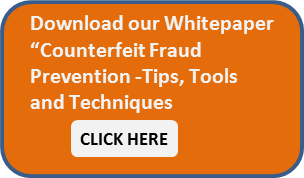 Companies lose billions of dollars every year to counterfeiters who are clever enough to print realistic looking - and feeling - money. As a small business owner or loss prevention manager, or even as an individual, every dollar lost hurts the bottom line. The best defense against losing money to counterfeiters - whether it's a kid down the street printing $20 bills on a high-quality printer or an organized crime cartel overseas funding terrorism - is a good offense, and the best offense is a counterfeit detector. These tools can save you a lot of money in the long run by detecting even high-end counterfeiting and preventing those bills from destroying your bottom line. Here are three ways they can save you money:
Companies lose billions of dollars every year to counterfeiters who are clever enough to print realistic looking - and feeling - money. As a small business owner or loss prevention manager, or even as an individual, every dollar lost hurts the bottom line. The best defense against losing money to counterfeiters - whether it's a kid down the street printing $20 bills on a high-quality printer or an organized crime cartel overseas funding terrorism - is a good offense, and the best offense is a counterfeit detector. These tools can save you a lot of money in the long run by detecting even high-end counterfeiting and preventing those bills from destroying your bottom line. Here are three ways they can save you money:
- Stop actual, straight-dollar losses. Every loss to a counterfeiter is a straight dollar loss. What looks like currency in your cash drawer is really just pretty paper, and completely worthless. Even worse, counterfeiters rarely print $1 bills, so those actual losses start higher and snowball. Every dollar you can authenticate means that you save money.
- Prevent expensive investigations and follow-up audits. The counterfeit losses do not stop at the mere dollar value lost. Evidence shows that, for every dollar lost, it actually costs the company or individual three dollars - three times the value of the counterfeit loss. That's because of the investigations and audits involved with counterfeit currency. Not only do Federal officials investigate, but companies and individuals also face audits afterward to ensure that they are not accepting more counterfeit currency. A counterfeit detector not only prevents the straight dollar losses but the exponentially larger losses caused by follow up investigations and audits. These also cost you time that could be spent doing other things: running your business, spending time with your family, or just relaxing, and they can also take a toll on your health and sanity.
- Increase checkout times. In today's fast-paced and wired world, customers want their checkout experience to be pleasant and speedy. If it isn't, you'll hear about it, probably via a bad review on a website. Customers don't want to wait while a manager gets called over to assess whether or not a bill is real. A counterfeit detector speeds up checkout time by empowering cashiers to make their own judgment calls. They use the device to verify the authenticity of the currency, and if it's not real, they can reject it quickly and move on to the next customer.
The value of a counterfeit detector is more than just the cost of the device. It pays for itself many times over in terms of money and goodwill saved.
What type of money detector should you buy for your business?
Well, that depends.
UV Authentication lights are low cost, flexible and easy to use. A good, high-quality UV Detector can cost less than $100, and will enable your transaction level employees to authenticate currency, as well as driver licenses, credit cards, traveler checks, and more. The downside? They only conduct one-type of validation test, e.g. - they allow you to see a fluorescent UV security feature. High-end technology savvy forgers have learned how to replicate these features, so the UV test is not 100% fool-proof, although it can catch most fakes.

The second option is to use an automated currency detector. In the case of the FraudFighter CT550 and FF-1000 units, they conduct as many as 6 different tests of US dollar bills, and are able to identify the denomination of each note. These are highly-accurate machines that are capable of detecting even the most advanced "super-notes".


